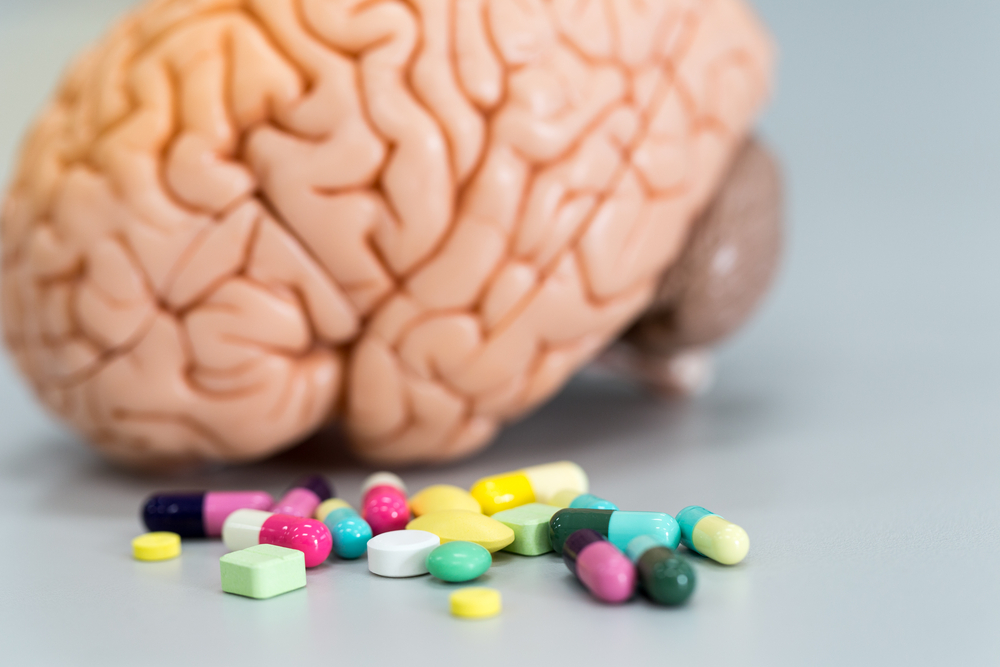Molecule Seen to Lessen Epileptic Activity, Improve Learning in Early Study

A new small molecule was seen to stimulate certain brain receptors, called NMDA receptors, and lessen abnormal brain epileptic activity in mouse models of Dravet syndrome and Alzheimer’s disease.
The treatment also helped mice recover part of their learning and memory abilities, the research team that developed the molecule reported.
This molecule or similar ones could offer a new way of treating cognitive disorders, including Dravet syndrome, and other forms of epilepsy and schizophrenia, the researchers said.
Their study, “GluN2A NMDA Receptor Enhancement Improves Brain Oscillations, Synchrony, and Cognitive Functions in Dravet Syndrome and Alzheimer’s Disease Models,” was published in the journal Cell Reports.
Previous research has identified a new class of experimental agents that selectively bind and stimulate a type of brain receptor that belongs to a family known as the N-methyl-d-aspartate (NMDA) receptors.
This family of receptors plays key roles in cognition and memory, and has been implicated in neuropsychiatric and neurodegenerative disorders.
NMDA receptors are ion channels that recognize and react to a neurotransmitter called glutamate — a chemical molecule that allows nerve cells to communicate.
At synapses (the junctions between two nerve cells where this communication takes place), NMDA receptors provide key signals for maintaining synaptic plasticity, the process by which the communication between neurons weakens or strengthens over time. Synaptic plasticity is essential to learning, creating new memories, and remembering old ones.
Problems with the functioning of NDMA receptors have been associated with epileptic and neurodegenerative diseases. However, agents available to target them are not specific, and do not distinguish between NDMA receptors present within or outside of synapses. As such, they can bind to all types of NDMA receptors, either fully blocking or constantly activating them.
Researchers at Genentech and the Gladstone Institute of Neurological Disease chose to test GNE-0723 — a molecule previously identified as, contrary to other agents, stimulating a specific type of NMDA receptor that contains the GluN2A subunit (called GluN2A-containing NMDAR).
Importantly, it specifically targets those receptors that are active and present within the synapse, boosting synaptic NMDAR signaling. By modulating active synapses only, researchers believe that neuronal communication would improve in a more physiological way, and with fewer unwanted effects on the brain.
Researchers investigated GNE-0723 in mouse models of Alzheimer’s disease and Dravet syndrome.
Oral dosing of mice with GNE-0723 was seen to lower a form of brain electrical activity called low-frequency oscillations, associated with epilepsy.
It also lowered epilepsy-related (epileptiform) electrical discharges in the brain, and eased evident cognitive deficits in both Alzheimer’s and Dravet mice. Upon GNE-0723 treatment, mice were able to learn faster and retain memories for longer, similar to healthy animals.
According to the researchers, the treatment shifted the neural activity across the brain to a state that facilitated learning and memory, and reduced epileptic activity.
“[GNE-0723 and similar molecules] could represent a potential therapeutic strategy for normalizing pathological network activity and cognitive functions in diseases … such as epilepsy and [Alzheimer’s],” the researchers wrote.
The team is now looking to identify the type of neurons and neuronal circuits that GNE-0723 acts upon. The researchers also discovered a related molecule, called GNE-5729, which boosts NMDA receptors in a similar way, but appears to have better pharmacological properties that may be useful for future studies.




